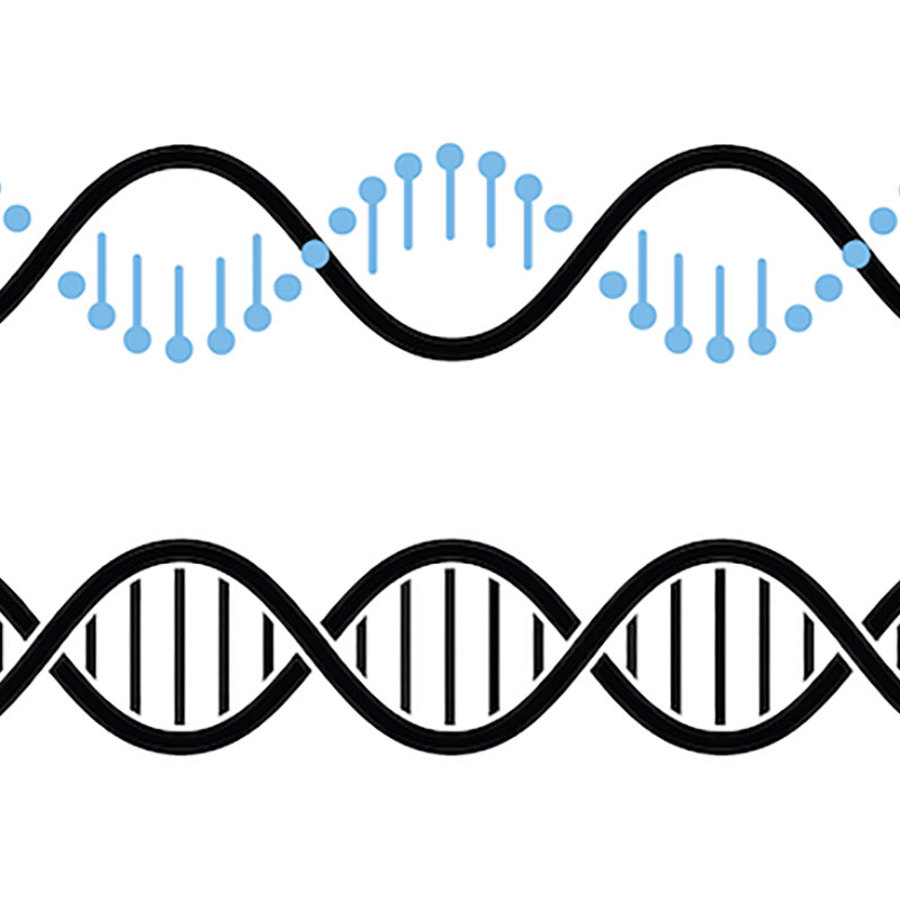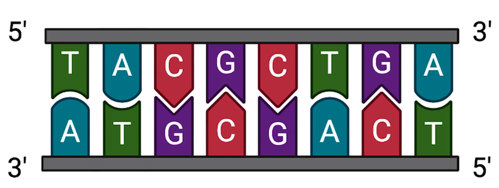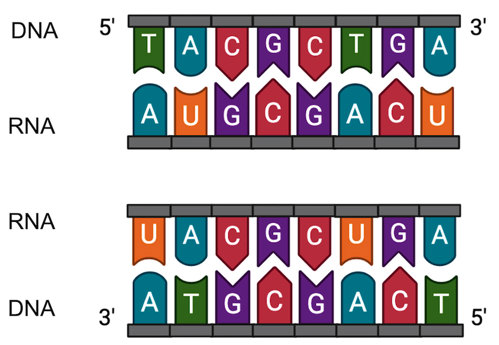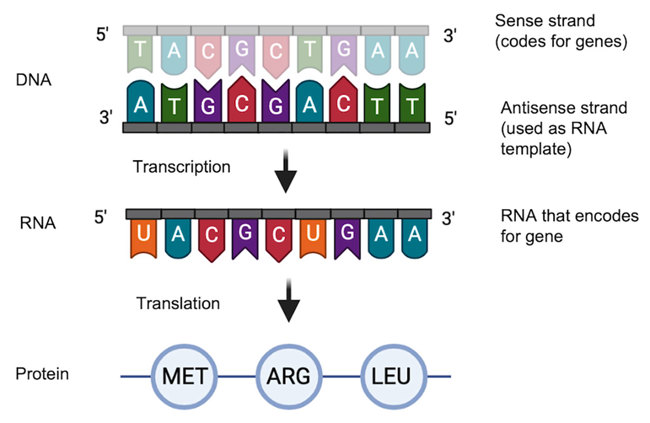
Do both sides of a base pair represent genes?
March 18, 2023

- Related Topics:
- DNA basics,
- Transcription and translation,
- Noncoding DNA
A science-minded software engineer from Idaho asks:
“Do both sides of a base pair represent genes? If so, does that mean that some genes are a mirror image of other genes? Or do some segments of DNA only have genes on "one-side" of the helix, while the other side is just filler?”
There are examples of all the things you mention! Genes can be on both sides of the DNA. But for the most part, genes are on one side with filler on the other.
To understand this more, let's jump back a bit to how genes are written into DNA.
Complementary, but different
DNA is double-sided, where the two strands are always “complementary” to each other. Adenine (A) always pairs with Thymine (T), while Guanine (G) always pairs with Cytosine (C).
That means that if we know the bases on one side, then we will know the bases for the other side too. For example, if one DNA strand is TACGCTGA, then we know the other strand will be ATGCGACT like in the image below.

DNA is always read in a specific direction: from 5’ to 3’. So when looking at the top strand we would read it from left to right and get TACGCTGA. But if we read the bottom strand, 5’ to 3’ is right to left and that gives you TCAGCGTA instead.
If the cell wants to use the information on the DNA, it has to transcribe it into RNA. This is the same as using the complementary base pair except that RNA uses Uracil (U) instead of Thymine. (You can read more about that here.)
And because the DNA can be read in either direction, you would get two different RNA sequences:

If you started with the top strand of DNA, you would get UCAGCGUA. But if you instead used the bottom strand as the template, you would get UACGCUGA. The two RNA strands are completely different from each other depending on whether it was complementary to the top or bottom strand of DNA.
Does it make “sense”?
The side that encodes for the gene is called the “sense” strand. This is the side of the DNA that has the same code as the RNA, except with the T replaced with U. The opposite side is called the “antisense” strand. This is the strand that is used as an RNA template.
For example, in the image below, the top strand is the sense strand that encodes for the gene. The bottom strand (transparent) is the antisense strand that is used as a template for the RNA.

Sense strand is defined by where the gene is located. If the gene is on the top strand, then that is the sense strand. If the gene is on the bottom strand then that one would be the sense strand. If there is no gene on either side then there is nothing to make “sense” of.
Looking both ways
Can genes be on both strands at the same time? Yes, there are actually examples where a gene is encoded on the top strand and bottom strand. That might look something like this:

For gene A and C the dark gray top strand is the sense strand while the bottom is the antisense template for RNA. For gene B the light gray bottom strand is the sense strand and the top is the antisense strand. As we talked about earlier, both strands give very different “codes” when read in the correct direction.
Research by scientists have shown that there are actually thousands of sense-antisense gene pairs in humans1. These are genes that have overlapping sequences like gene A and B OR gene B and C.
These gene pairs are a little unusual though. Even though both sides are transcribed into RNA, usually only one gets translated into a protein. The gene that doesn’t get translated into a protein is called a non-coding RNA.
Non-coding RNAs like that often have a special function: they can help regulate the expression of the other half of the gene pair!
One example of this is the Xist gene. Even though most female mammals have two X-chromosomes, one of them gets silenced in a process called X-inactivation. The Xist gene makes the RNA that does this.
The Tsix gene is the mirror image of Xist. It’s on the opposite strand, and has essentially the same sequence but backwards (which is where it gets its name!). This gene helps control Xist, and prevents it from silencing both X chromosomes2.
But most genes aren’t paired like this. The majority of them are just encoded on the “sense” strand with filler on the opposite side.
Read More:
- Khan Academy: Going from DNA to RNA to protein
- BioNinja: Sense vs Antisense
- Youtube: Xist and Tsix in X-chromosome Inactivation

Author: Christy Luong
When this answer was published in 2023, Christy was a Ph.D. candidate in the Department of Chemicals and System Biology, studying the mechanisms of random monoallelic expression in Howard Chang’s and Joanna Wysocka’s laboratories. Christy wrote this answer while participating in the Stanford at The Tech program.
 Skip Navigation
Skip Navigation
